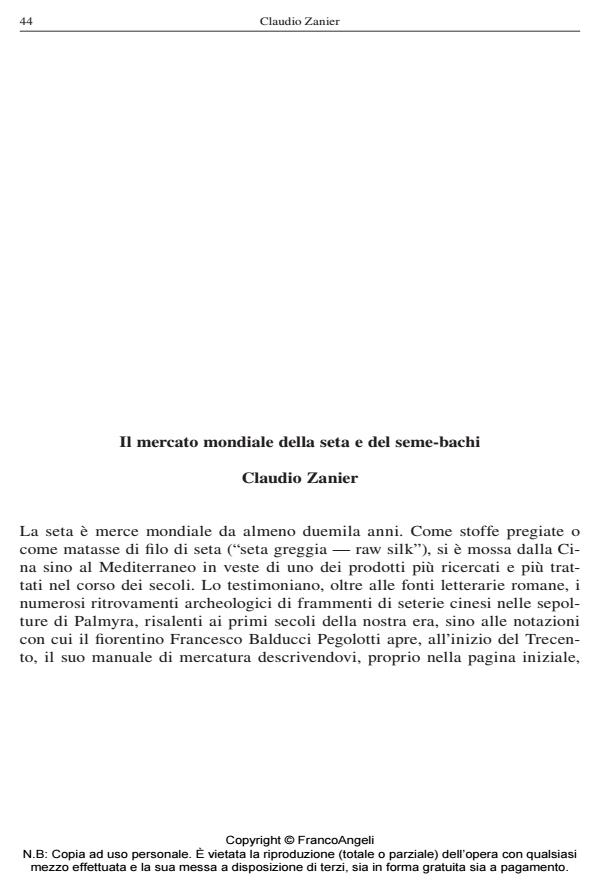The World Market of Silk and Seed-bugs
Journal title ITALIA CONTEMPORANEA
Author/s Claudio Zanier
Publishing Year 2016 Issue 2016/282
Language Italian Pages 21 P. 44-64 File size 2556 KB
DOI 10.3280/IC2016-282003
DOI is like a bar code for intellectual property: to have more infomation
click here
Below, you can see the article first page
If you want to buy this article in PDF format, you can do it, following the instructions to buy download credits

FrancoAngeli is member of Publishers International Linking Association, Inc (PILA), a not-for-profit association which run the CrossRef service enabling links to and from online scholarly content.
Silk products - mostly silk fabrics and silk threads - have been for centuries a worldtraded good. An early 14th Century "how to" Florentine trade manual, described how to go to China by a two years return journey to buy large amounts of precious silk thread hanks. In the middle of 19th Century the transport revolution allowed silk making European countries to fend off the devastating effects of an unstoppable silkworm epidemics by importing from far away lands large amounts of a peculiar silk input: silkworm eggs. For over 30 years hundreds of mostly Italian silkworm eggs traders roamed the world in search of that product, investing huge sums of money. Italy and Japan profited most of that special trade.
Keywords: Silk, Seed-bugs, Trade, Business History, Global History, Italy
Claudio Zanier, Il mercato mondiale della seta e del seme-bachi in "ITALIA CONTEMPORANEA" 282/2016, pp 44-64, DOI: 10.3280/IC2016-282003